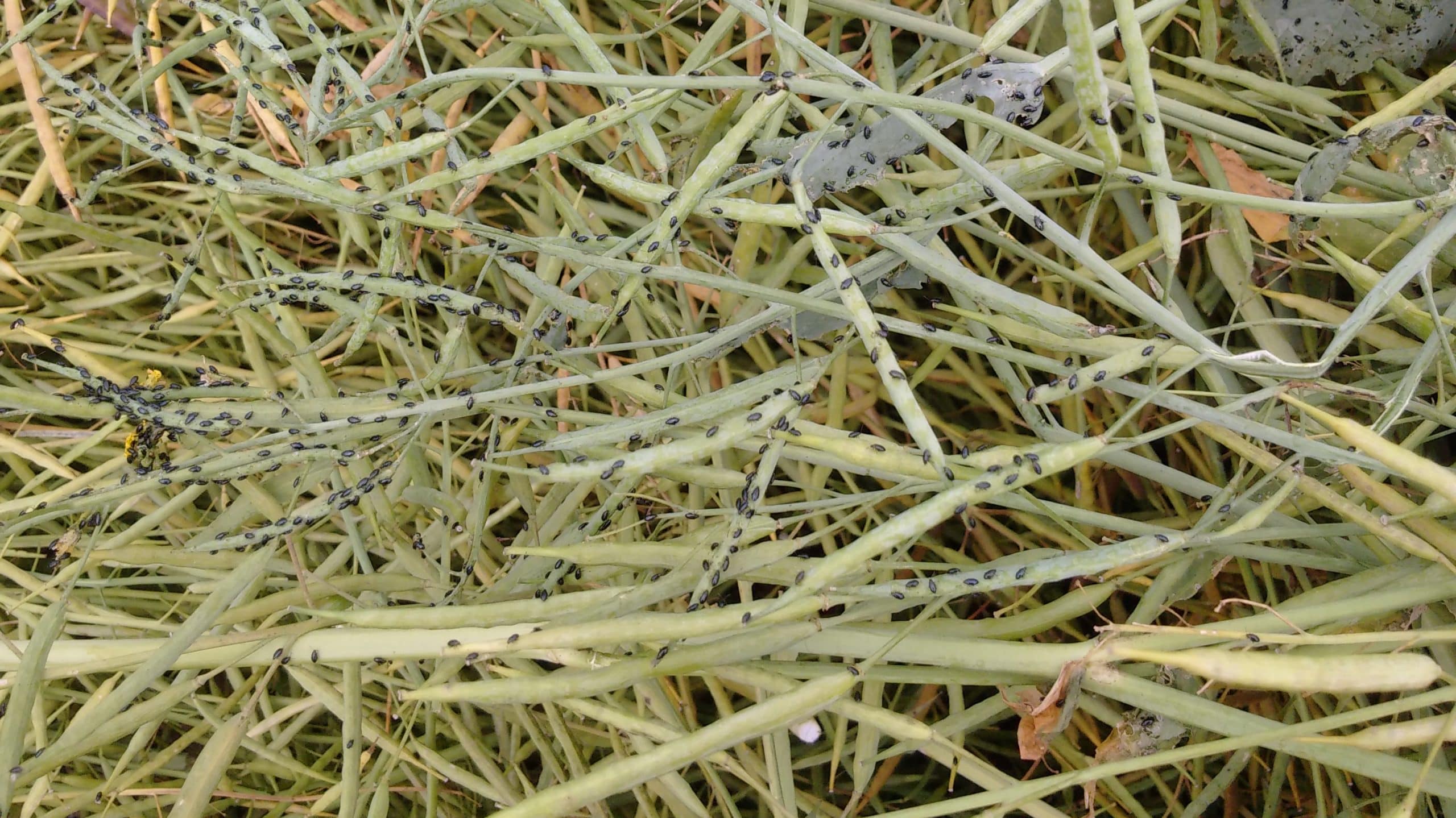While you are out scouting for disease, you may as well check for a few critters too! Here are the insects you should be looking for at this time of year:
1) Flea beetles
- Description: These tiny beetles with oval bodies can emerge again in the fall and cause minor damage to fields, so they are worth scouting for, but are very rarely above economic thresholds.
- Further reading:
2) Lygus bugs
- Description: Although most reports of lygus bug stated low, below economic threshold numbers, it is worth going out and scouting for the adult bugs (whose younger instars you may have noticed earlier in the season). The moderate size of lygus bugs makes them easier to spot and the characteristic “V” in the upper center of their back is quite recognizable.
- Further reading:
3) Bertha armyworms
- Description: Bertha armyworm traps have mostly been low, with a few moderate numbers in select areas. The variation in colour can make them harder to identify, but the yellow/orange stripe along the side the larger berthas makes them easier to spot. They feed on the outer green layer of the stem, chewing holes in the pods and even eating the seeds.
- Further reading:
4) Grasshoppers
- Description: There have been few reports of grasshopper numbers this year, which may be related to the lack of warm, dry conditions in the past few weeks. They tend to be present in higher numbers at the edges of the fields, which makes spraying for them easier. Grasshoppers go through many smaller instars before becoming an adult. Although there are many species of grasshoppers, the most common ones on the prairies are the two-striped grasshopper and migratory grasshopper.
- Further reading:
5) Beneficial insects
- In addition to the economic thresholds that should be considered before spraying, remember to use the spraytoswath.ca to check the pre-harvest intervals of all products, if you did need to spray any insecticide.
- Description: There are many beneficial insects present in canola fields throughout the growing season, even when the pollinators leave after flowering ends. Your canola canopy may include parasitic wasps which parasitize plant bugs, bertha armyworm and other caterpillars, Carabid (ground) beetles, which eat various larvae as well as lygus nymphs and rove beetles which consume root maggots, aphids, mites and other insects.
- Further reading:
For a quick reference guide when you are scouting in your field, (including a whole section on beneficials) use the canola insect scouting guide.


